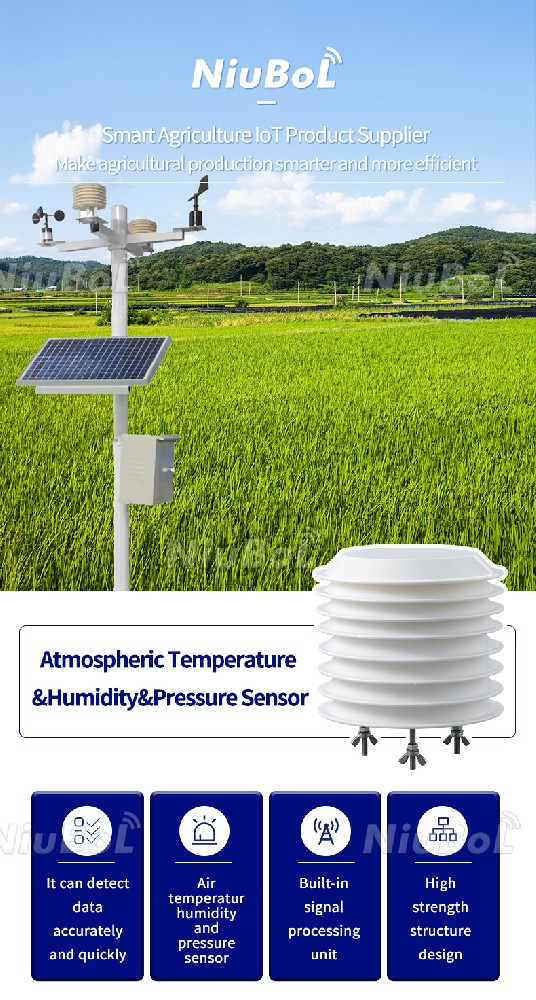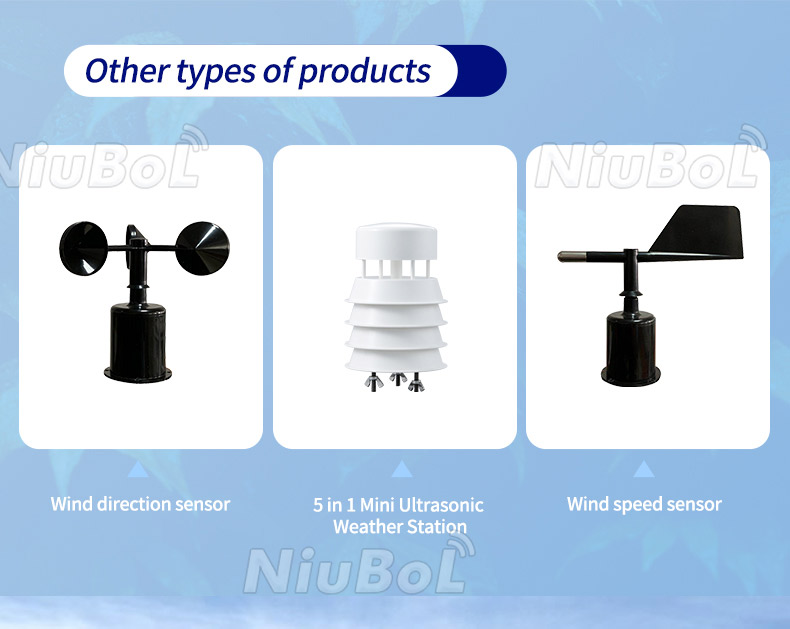

— Blogs —
—Products—
 Consumer hotline +8618073152920
Consumer hotline +8618073152920 WhatsApp:+8615367865107
Address:Room 102, District D, Houhu Industrial Park, Yuelu District, Changsha City, Hunan Province, China
Product knowledge
Time:2022-06-14 22:24:55 Popularity:1533
The IoT Agricultural Microclimate Observatory is an innovative solution for agricultural monitoring, utilizing IoT technology to offer real-time data collection on the environmental factors crucial for crop growth and agricultural productivity. By integrating a variety of sensors and intelligent data systems, the observatory provides comprehensive monitoring of microclimatic conditions, enabling farmers to optimize their farming practices.

The observatory is equipped with a wide range of sensors designed to monitor various agricultural and environmental parameters. These sensors include:
- Temperature and Humidity Sensors: Measure air temperature and humidity to provide insights into environmental conditions and crop health.
- Light Sensors: Monitor light intensity and duration, which are critical for photosynthesis and overall plant growth.
- Photosynthesis Sensors: Track the efficiency of photosynthesis, helping to understand how plants are performing under current environmental conditions.
- Rainfall Sensors: Measure precipitation levels, which is important for irrigation management and predicting potential water stress or flooding.
- Wind Speed and Direction Sensors: Provide data on wind conditions, which can influence plant pollination and help prevent damage due to strong winds.
- Soil Sensors (Temperature, Moisture, pH, Salinity): These sensors monitor soil conditions such as temperature, moisture, pH level, and salinity, which directly affect crop health and growth. Soil moisture sensors are especially important for irrigation management.
- Air Pressure Sensors: Help monitor atmospheric pressure, which can indicate changes in weather patterns that might affect farming operations.
- Carbon Dioxide Sensors: Measure CO₂ levels, which are essential for understanding plant growth conditions, as higher CO₂ levels can enhance photosynthesis.
- Total Radiation Sensors: Measure solar radiation, providing data on the amount of sunlight reaching the crops, influencing plant growth and energy production.
- Sunshine Hours Sensors: Monitor the duration of sunlight exposure, which is crucial for photosynthetic activity and crop development.
- Control Equipment: The system includes control equipment that processes sensor data and triggers actions based on predefined thresholds or user input. This allows for automation of certain processes such as irrigation or ventilation in greenhouses.
- Data Transmission Equipment: The observatory uses wireless communication technologies (e.g., Wi-Fi, LoRaWAN, or Zigbee) to transmit collected data to a central system or cloud server. This ensures remote monitoring and access to real-time information from anywhere.
- Smart Weather Station System: The data collected by the sensors is transmitted to a central weather station system, which aggregates and analyzes the data to provide actionable insights. The system also supports data visualization tools, allowing farmers to monitor crop growth and soil conditions in real-time.
When environmental conditions deviate from optimal ranges for crop growth, the system can trigger alerts or provide notifications to farmers. These alerts enable quick responses to mitigate potential risks to crop health. For example:
- Irrigation Control: If soil moisture is too low, the system can trigger automatic irrigation or notify the farmer to apply water.
- Frost Warning: If the temperature drops below a certain threshold, the system can alert the farmer to take preventative actions against frost damage.
- Nutrient Management: The data on soil pH and salinity can help farmers adjust fertilization practices to maintain soil health.

- Optimized Farming Practices: By monitoring key environmental factors, the observatory helps farmers make data-driven decisions. For instance, knowing the exact light levels or soil moisture can help adjust irrigation schedules, fertilization, or shading practices for optimal crop growth.
- Increased Yield and Efficiency: With real-time insights into environmental conditions, farmers can proactively manage their crops, leading to increased productivity, reduced resource waste, and better overall crop yields.
- Climate Suitability for Crops: The station can also help determine which crops are best suited to the local climate. By monitoring local environmental conditions over time, the system can offer recommendations for crop rotation, new crop introduction, or changes in planting strategies.
- Precision Agriculture: The observatory plays a key role in precision agriculture, enabling farmers to monitor and adjust their farming practices with a high degree of accuracy. This improves resource efficiency and enhances sustainability.
- Early Detection of Problems: The system can detect early signs of environmental stress or disease, such as inadequate moisture or pest activity, helping farmers take preventative actions before major issues arise.

The IoT Agricultural Microclimate Observatory is a powerful tool for modernizing agriculture through real-time monitoring and data collection. By integrating sensors that track various environmental factors, it provides valuable insights into the conditions influencing crop growth. The observatory helps farmers optimize their operations, respond to potential problems early, and increase crop yield and quality. As a result, it contributes to more sustainable, efficient, and profitable agricultural practices.
Prev:Application advantages of automatic weather station
Next:Application of Automatic Weather Station in Modern Agriculture
Related recommendations
Sensors & Weather Stations Catalog
Agriculture Sensors and Weather Stations Catalog-NiuBoL.pdf
Weather Stations Catalog-NiuBoL.pdf
Related products
 Combined air temperature and relative humidity sensor
Combined air temperature and relative humidity sensor Soil Moisture Temperature sensor for irrigation
Soil Moisture Temperature sensor for irrigation Soil pH sensor RS485 soil Testing instrument soil ph meter for agriculture
Soil pH sensor RS485 soil Testing instrument soil ph meter for agriculture Wind Speed sensor Output Modbus/RS485/Analog/0-5V/4-20mA
Wind Speed sensor Output Modbus/RS485/Analog/0-5V/4-20mA Tipping bucket rain gauge for weather monitoring auto rainfall sensor RS485/Outdoor/stainless steel
Tipping bucket rain gauge for weather monitoring auto rainfall sensor RS485/Outdoor/stainless steel Pyranometer Solar Radiation Sensor 4-20mA/RS485
Pyranometer Solar Radiation Sensor 4-20mA/RS485
Screenshot, WhatsApp to identify the QR code
WhatsApp number:+8615367865107
(Click on WhatsApp to copy and add friends)
